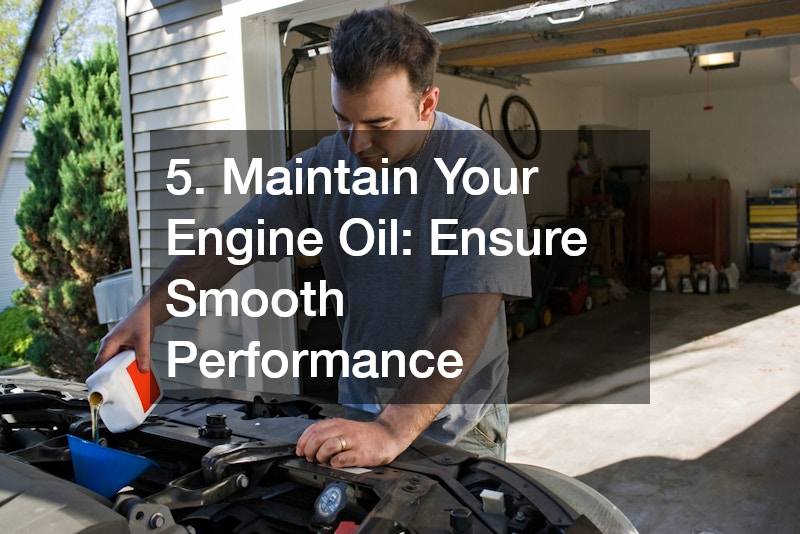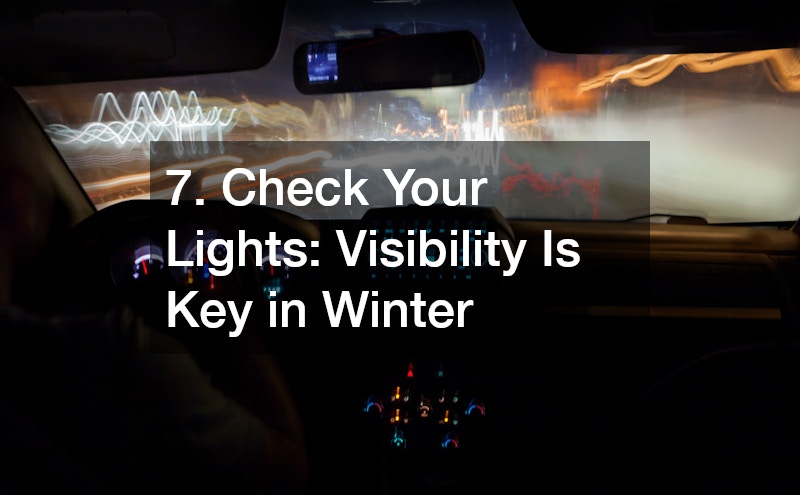As the temperatures dip and winter weather rolls in, it’s time to think about preparing your car for the harsh conditions ahead. Cold temperatures, snow, ice, and sleet can put additional stress on your vehicle, but with proper preparation, you can keep your car running smoothly and safely. Here are 10 essential tips to winter-proof your ride, ensuring you maintain a healthy car that’s ready to handle whatever Mother Nature throws your way.
1. Check Your Battery: Keep the Power Flowing
Your car’s battery is vital to keeping everything powered, from starting your engine to running electrical systems like lights and heat. In winter, the cold weather can make it harder for your battery to perform, so it’s important to check it regularly to avoid a potential breakdown. If your car struggles to start on chilly mornings, it could be a sign that your battery is losing its charge or capacity.
Inspect for Corrosion and Loose Connections
One of the first steps in battery maintenance is to inspect the terminals for any corrosion. Corrosion can build up around the battery terminals, affecting the power flow. You can clean the corrosion off with a simple mixture of baking soda and water. Additionally, ensure the battery is securely fastened to prevent any jostling, which could disrupt the connections or cause damage. Loose connections are a common issue that could cause your battery to fail when you need it the most.
Have Your Battery Tested
Cold weather can be particularly tough on older batteries. If your battery is over three years old, it’s worth having it tested at an auto repair shop or auto parts store. These shops typically offer free battery testing to ensure that your battery is still in good condition and can withstand the cold temperatures. A weak battery can struggle to generate enough power in winter, leaving you stranded when you need your vehicle the most. If your battery shows signs of wear or can’t hold a charge, it’s wise to replace it before the cold weather sets in.
Replace Your Battery if Necessary
If your battery is nearing the end of its life or shows signs of trouble, replacing it is a small investment that could save you from being stuck in a winter emergency. Newer batteries are more reliable in extreme conditions, ensuring that your car starts without issue and performs optimally during the colder months.
2. Inspect Your Tires: Grip and Traction Matter

When it comes to driving in winter, your tires are the most important factor for keeping you safe. As the temperatures drop, the rubber in your tires can stiffen, reducing their ability to grip the road effectively. This can make your vehicle more prone to slipping on icy or snowy surfaces, which can be dangerous. A thorough inspection of your tires is essential to ensure that they can handle the winter conditions and provide the necessary traction for safe driving.
Check Tread Depth and Replace When Necessary
The tread on your tires plays a significant role in maintaining traction on slippery roads. To ensure adequate grip, check the tread depth regularly. The legal minimum tread depth in most places is 2/32 of an inch, but for winter driving, it’s recommended to replace tires once the tread falls below 4/32 of an inch. Shallow treads are less effective at displacing snow and water, which increases the risk of losing control on icy or wet roads. If your tires are nearing the end of their lifespan, it’s best to replace them before the winter weather hits full force.
Consider Winter Tires for Better Performance
If you live in an area where snow and ice are common, investing in winter tires can make a big difference. Winter tires are made with a special rubber compound that remains flexible in sub-zero temperatures, providing improved traction on icy and snowy surfaces. They also feature deeper treads and specialized patterns designed to channel snow and slush away from the tire, which helps reduce the risk of hydroplaning. Make sure to switch to winter tires if your region experiences harsh winter conditions, as they are designed specifically for winter driving and can greatly enhance your safety on the road.
Maintain Proper Tire Pressure
In cold weather, tire pressure tends to drop, which can negatively affect your tires’ performance and fuel efficiency. Regularly check your tire pressure to ensure it meets the recommended levels, which can often be found in your vehicle’s manual or on the inside of the driver’s side door. Low tire pressure can cause uneven wear and reduce the tire’s ability to grip the road, so it’s important to stay on top of this.
If you notice any uneven wear or damage to your tires, it’s a good idea to seek professional help from an auto repair shop. These issues may indicate problems that need addressing to ensure your tires are functioning properly.
Seek Professional Help
Sometimes, damaged rims can affect the performance of your tires. If you suspect damage to your wheels or rims, it’s best to visit a shop for wheel repair services. These services can fix bent or cracked rims, ensuring that your tires stay properly aligned with the road. Additionally, if your vehicle pulls to one side, it might be a sign of improper alignment. This is where auto alignment comes in—having your wheels aligned properly ensures even tire wear and optimal handling during winter driving. Timely attention to these issues will improve your car’s overall handling and traction in cold conditions.
3. Change to Winter-Ready Wiper Blades
Winter wiper blades are designed to withstand the challenges posed by cold temperatures and heavy snow. Unlike traditional wipers, these are equipped with a rubber cover that prevents snow and ice from accumulating on the blade. This design ensures that your blades can function properly in severe weather, keeping your windshield clear. Winter blades also tend to have a more flexible frame that helps them maintain constant contact with the windshield, ensuring optimal clearing performance, even when roads are covered with slush or snow.
Regular Replacement and Maintenance
Even the best winter wiper blades will wear down over time. It’s important to replace your wiper blades every 6-12 months, depending on the severity of the weather conditions in your area. In addition to replacing them, it’s a good idea to regularly clean your windshield and wiper blades to remove any debris or ice build-up. This simple step can prevent the rubber from becoming damaged and keep your wipers performing at their best. Check out an auto accessory company that offers a wide selection of wiper blades designed for different driving conditions. Be sure to consult their recommendations to find the best options for your region.
4. Top Off Your Antifreeze: Prevent Freezing in Your Engine
Antifreeze, also known as coolant, is an essential fluid that helps regulate your engine’s temperature, particularly during the cold winter months. Without enough antifreeze, your engine could face overheating or, even worse, freezing in extremely low temperatures. This can lead to serious engine damage, which can be costly to repair. Therefore, topping off your antifreeze is an important part of winterizing your vehicle.
Check and Top Off Your Coolant Levels
Start by checking the coolant level in your vehicle’s radiator. If the level is low, it’s important to top it off with the appropriate coolant for your make and model. Low coolant levels can cause your engine to overheat, even in winter, so make sure the coolant is at the correct level before driving in freezing temperatures. Additionally, if you haven’t already done so, have your coolant flushed and replaced periodically to ensure your engine runs smoothly. Regular car maintenance is key to keeping all engine components in top condition and preventing future problems.
Verify the Correct Antifreeze Mixture
Antifreeze needs to be mixed with water in the correct ratio to function properly. The most common mixture is a 50/50 blend of antifreeze and water, which helps the coolant maintain its effectiveness even in freezing conditions. If your antifreeze mixture is not properly balanced, it could freeze, causing damage to your engine’s components. It’s crucial to ensure that your coolant is the right consistency for winter conditions, so your engine stays protected from extreme temperatures.
5. Maintain Your Engine Oil: Ensure Smooth Performance

Engine oil keeps all the moving parts in your engine lubricated, reducing friction and preventing excessive wear. In cold weather, thicker oil can struggle to flow, potentially causing engine damage. It’s essential to check your engine oil’s consistency and consider switching to a winter-grade oil that flows more easily in low temperatures. The right oil viscosity will ensure your engine runs smoothly and starts without difficulty.
Regular oil changes are also critical for maintaining the health of your engine, especially before winter. If you haven’t had an oil change service recently, now is the time to get one before winter sets in. Fresh oil helps ensure better performance, better fuel economy, and reduces the chances of engine trouble in the colder months. Follow your car’s recommended oil change schedule, and consider using a synthetic oil that performs well in low temperatures.
6. Check Your Heater and Defroster: Stay Comfortable and Safe
Winter means cold mornings and freezing temperatures, and the last thing you want is a malfunctioning heater or defroster. These systems are vital for maintaining comfort and visibility during winter driving. Start by checking the operation of your vehicle’s heater to make sure it’s blowing warm air when needed. If it’s not working efficiently, it could be a sign of low coolant levels, a malfunctioning thermostat, or another issue that needs attention.
Equally important is the defroster, which helps clear the windshield of fog, frost, and ice. A poorly functioning defroster can make it difficult to see while driving, especially during early mornings or evening commutes when visibility is reduced. Make sure the defroster works effectively by testing it before the cold weather sets in. If either system is not functioning correctly, you may need professional auto repairs to get it working correctly.
7. Check Your Lights: Visibility Is Key in Winter

As winter days grow shorter and the weather becomes more unpredictable, ensuring your car’s lights are functioning properly is essential for safety. Check your headlights, taillights, brake lights, and turn signals to ensure they are all in working order. Non-functioning lights not only reduce your visibility but also increase the risk of accidents. Regular inspections can prevent unexpected issues and ensure that you’re visible to other drivers during the darker, colder months.
Clean Your Lights Regularly: Maximize Visibility
Winter driving often brings road salt, grime, and snow that can accumulate on your lights, making them less effective. Keeping your lights clean is crucial for maintaining maximum visibility. Clean your headlights, taillights, and turn signals regularly to prevent dirt from dimming their brightness. If cleaning doesn’t improve the light output, it may indicate a deeper issue. If this happens, it’s best to visit an auto repair shop to get your lights inspected and repaired.
Upgrade to Brighter, Higher-Quality Bulbs
Dim headlights can be a challenge when driving in winter conditions, especially during snowstorms or early sunsets. If your headlights seem lackluster, consider upgrading to brighter, higher-quality bulbs such as LED or halogen options. These bulbs provide clearer, more focused light that will enhance both your visibility on the road and your ability to be seen by other drivers.
Adjust Your Headlights: Optimize Alignment
Improperly aligned headlights can reduce your ability to see the road clearly and may even blind other drivers. Winter weather and rough roads can cause your headlights to shift out of alignment, so it’s important to check their positioning. If you notice that your headlights are pointing in the wrong direction, take your vehicle to a professional for proper adjustment. An auto body repair shop can ensure your headlights are correctly aligned, helping maximize your visibility and preventing dangerous driving conditions.
8. Winter-Proof Your Windshield: Keep It Clear and Safe

During winter, maintaining clear visibility is essential for safe driving, and your windshield plays a central role in that. Regular windshield care is crucial in winter months, as ice, snow, and road salt can quickly obstruct your view and reduce your driving safety. Start by ensuring your windshield is free of cracks or chips. Small imperfections may worsen in cold temperatures, leading to larger issues that could affect your visibility. If you notice any damage, it’s a good idea to schedule auto windshield repairs promptly to avoid further complications.
Use the Right Windshield Washer Fluid
One of the simplest yet most effective ways to keep your windshield clear during winter is by using the appropriate washer fluid. Regular windshield washer fluid can freeze in low temperatures, leaving you without a means of cleaning your windshield. Opt for winter-grade washer fluid, which is designed to handle freezing conditions. Winter-grade fluid is formulated with antifreeze properties that help prevent freezing in your washer reservoir and on your windshield. It also does a better job of breaking down ice, snow, and road grime, making it easier for your wipers to clear the windshield.
Regular Maintenance and Protection
Besides replacing the washer fluid and checking the wipers, regular maintenance is key to ensuring your windshield stays in top shape. If your windshield is cracked or chipped, cold weather can cause the damage to spread, creating bigger problems that are more costly to fix. It’s worth addressing minor chips or cracks early before they worsen. Routine windshield care includes applying a protective coating to reduce the buildup of ice and snow, and regularly cleaning your windshield to maintain visibility.
9. Test Your Brakes: Ensure Stopping Power in Slippery Conditions
Your vehicle’s brakes are essential to your safety year-round, but their importance increases during winter months. Cold, icy, and wet roads can significantly extend your stopping distance, making it critical to ensure your brakes are in top condition before the cold weather hits. Proper brake maintenance is not only a matter of safety but also of preventing costly repairs due to neglected brake issues.
Inspect Your Brakes for Wear and Leaks
Brake pads and rotors endure heavy wear over time, especially in winter conditions where salt, moisture, and colder temperatures can accelerate degradation. Have your brake pads and rotors thoroughly inspected for wear and replace them if necessary to ensure optimal stopping power. Also, check for any brake fluid leaks, as low or contaminated brake fluid can greatly reduce braking performance and may even cause complete brake failure in extreme cases. Consider getting your brake lines and calipers inspected as well to prevent any leaks or damage that could impact your vehicle’s braking efficiency.
Ensure Your ABS Is Working Properly
Anti-lock braking systems (ABS) are a crucial safety feature designed to prevent your wheels from locking up during hard braking, especially on slippery roads. If your vehicle is equipped with ABS, it’s essential to ensure it’s working properly. ABS allows for better control and reduces the risk of skidding, improving your ability to stop in emergency situations. If your ABS warning light appears on your dashboard, have the system checked immediately. Even if your vehicle doesn’t have ABS, always drive with caution in winter weather. Maintain a safe distance from other vehicles, avoid sudden braking, and adjust your speed to match the road conditions to minimize the risk of accidents.
10. Inspect Your Transmission: Essential for Winter Driving
While many drivers focus on their tires and brakes for winter preparation, your vehicle’s transmission system is just as critical, especially in harsh winter conditions. The transmission is responsible for shifting gears smoothly, and in cold weather, it’s important to ensure it functions properly to avoid any unexpected issues on the road. Cold temperatures can thicken transmission fluid, which may cause delayed or rough shifting. Make sure your transmission fluid is topped off and at the correct level, as low or dirty fluid can cause poor shifting performance and potential transmission damage.
Transmission Fluid Maintenance: Key for Longevity
Transmission fluid is essential for lubricating the components inside the transmission, helping them work smoothly without friction. In colder weather, thickened fluid can make it harder for the transmission to shift gears, leading to jerky or hesitant acceleration. Regularly check your transmission fluid to ensure it’s clean and at the right level. If the fluid appears dark or has a burnt smell, it may be time for a change. A transmission mechanic can perform a fluid flush or replace the fluid to ensure it remains in top condition for winter driving.
Signs of Transmission Problems: Don’t Ignore the Warning Signs
If your vehicle’s transmission is malfunctioning, it can become more pronounced during winter, as the added strain from cold temperatures can exacerbate existing problems. Some signs of transmission trouble include slipping gears, unusual noises (such as grinding or whining), or difficulty shifting into gear. If you experience any of these issues, it’s important to consult a transmission mechanic immediately to prevent further damage and costly repairs. By addressing transmission issues early, you can ensure smoother, safer driving throughout the colder months.
In Closing
Preparing your vehicle for winter isn’t just about staying comfortable—it’s about ensuring your safety and the reliability of your car in harsh conditions. By following these 10 tips, you can winter-proof your ride and be ready for whatever the season throws your way. Regular maintenance and winter-specific preparations can go a long way in keeping your car running smoothly, ensuring you stay safe on the road, and helping you avoid costly repairs. Make winter prep a priority, and drive with confidence all season long.

